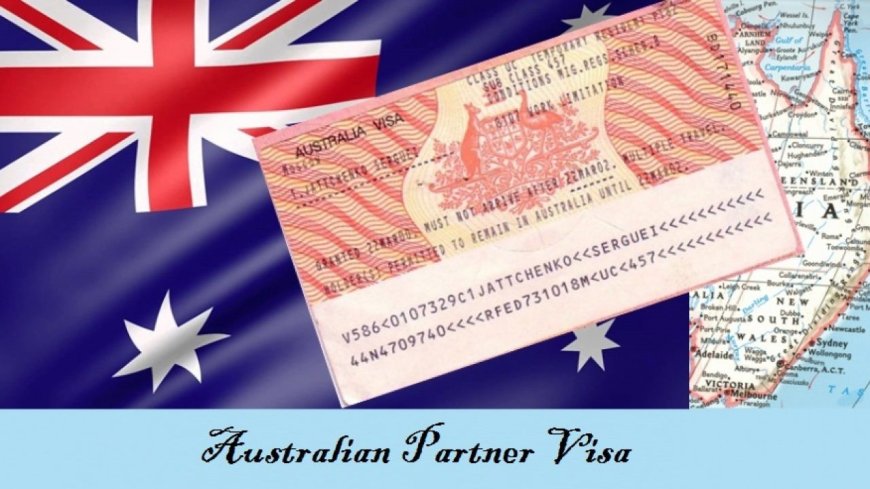The Ultimate Checklist for Your Spouse Visa Australia
Get ready for a smooth spouse visa journey with our ultimate checklist! Learn essential steps, key documents, and expert tips to secure your visa.

Applying for a spouse visa Australia can be a challenging process filled with documentation, timelines, and requirements that demand careful attention. The Australian government has specific criteria to ensure each application meets their standards, and missing a single detail can delay or jeopardize the visa approval. This checklist is designed to guide you through each essential step so you can submit your application with confidence and clarity. Engaging the support of a registered migration agent in Australia can make the process smoother, but it’s always beneficial to know the key requirements yourself.
1. Eligibility Assessment: Understanding Basic Requirements
Before you gather documents, ensure that you meet the eligibility criteria for the spouse visa:
- Relationship requirements: You and your partner must demonstrate that your relationship is genuine and continuing. You can apply if you are married or in a de facto relationship.
- Character requirements: All applicants over 16 must pass a character assessment.
- Health requirements: Australia requires health checks for all applicants to ensure public health safety.
2. Gather Key Documents
The paperwork required for a spouse visa in Australia is comprehensive. Missing or inaccurate information can result in significant delays. Here are the primary documents you will need:
- Identification: Passport, birth certificate, and any name change documentation.
- Proof of Relationship: Evidence such as a marriage certificate or joint bank accounts, joint leases, or bills in both your names.
- Character Documents: Police clearance certificates from all countries where you’ve lived for more than a year.
- Health Assessment Results: A medical certificate from a government-approved panel of doctors.
3. Financial Evidence
The Australian government requires proof that you and your partner can support yourselves financially. This means showing evidence such as:
- Joint financial statements or bank accounts
- Shared assets (property ownership, cars, etc.)
- Regular monetary transfers between you and your partner if living apart
Financial stability is a key part of a spouse visa application. Ensure your documents demonstrate a shared financial commitment, which strengthens your application.
4. Statutory Declarations and Affidavits
Statutory declarations from friends and family that confirm the authenticity of your relationship can add weight to your application. These must be completed by people who have known you and your partner for a significant time and can confirm your relationship’s legitimacy.
- Statutory declarations from Australian citizens or permanent residents
- Letters of support from close friends and family members, detailing your relationship
5. Proof of Communication
If you and your partner have spent time apart, providing records of your communication helps establish that your relationship has been maintained:
- Phone records or email exchanges
- Photographs of shared holidays or events
- Evidence of visits if you’ve traveled to see one another
6. Living Arrangements and Shared Life Evidence
Australian immigration looks closely at evidence of your shared life, including details of your cohabitation and social lives together. Consider including:
- Lease agreements, utility bills, or official mail to the same address
- Invitations to social gatherings, functions, or weddings you attended together
- Evidence of any shared responsibilities like pet ownership, childcare, etc.
7. Application Fees and Payment Information
Ensure you are aware of all applicable visa fees, which can be significant, and ensure you pay them on time. Delayed payments can impact your visa processing time.
- Keep a copy of all payment receipts
- Confirm that you’ve allocated sufficient funds to cover these fees, as they may vary
8. Hire a Registered Migration Agent in Australia
Navigating the spouse visa process is complex, and small errors can lead to significant issues. Consulting a registered migration agent in Australia can make a tremendous difference, especially if your case is unique or complex. A registered agent will:
- Review your documents for accuracy
- Assist with gathering the right evidence
- Help you understand specific requirements and how they apply to your circumstances
Using a professional ensures your application meets all standards and boosts your chances of success.
9. Complete the Visa Application Form
Ensure that your application form is filled out completely, accurately, and with up-to-date information. A small error or inconsistency can delay the processing of your visa or even lead to rejection.
- Double-check each section, and confirm your answers are consistent with your supporting documents.
- Ensure that all the information aligns with your passport and identity documents.
10. Submit Your Application and Track It
Once all documentation is compiled, submit your application through the Department of Home Affairs website. Retain copies of every document for your records, and monitor your application status regularly.
- The processing time for a spouse visa can range from several months to over a year.
- Respond promptly to any requests for additional information or documentation from the Department of Home Affairs.
11. Prepare for an Interview (If Required)
In some cases, you may be asked to attend an interview to verify the legitimacy of your relationship. Prepare by reviewing your relationship’s details, ensuring both you and your partner are familiar with key dates, events, and shared experiences.
- Prepare documentation if they ask you to bring additional items.
- Approach the interview calmly and honestly, discussing your relationship openly.
12. Plan for Temporary and Permanent Visa Stages
The Australian spouse visa process has two main stages: a temporary visa, followed by a permanent visa. Once you receive your temporary visa, you’ll wait for a period (typically two years) before applying for the permanent visa.
- Ensure you’re prepared for each stage and understand what will be required at each step.
- Stay updated on visa regulations, as they can change.
13. Regularly Check Your Visa Status
Once your application is submitted, it’s essential to monitor its progress. Any additional information requests or updates will be visible in your account on the Department of Home Affairs’ website.
- Respond promptly to any inquiries from the immigration office.
- Keep your personal information, including contact details, up-to-date in their system.
14. Consider Future Obligations and Permanent Residency
Once you’ve obtained your spouse's visa, remember that there may be further steps to take if you aim to settle permanently. After holding a temporary spouse visa, most applicants can apply for permanent residency.
- Explore your options for permanent residency and citizenship.
- Understand that maintaining your visa status may require you to follow specific conditions.
Final Thoughts: Your Path to Reuniting in Australia
Applying for a spouse visa in Australia is a big decision, and each step requires close attention. Organizing your documents, meeting eligibility requirements, and understanding the timeline for approval are all crucial steps that can help make the process smoother. A registered migration agent in Australia can provide valuable guidance, ensuring you are prepared at every stage and maximizing your chances for approval.
By following this checklist, you can prepare for a successful spouse visa application and look forward to reuniting with your loved one in Australia. Remember, attention to detail, consistency in documentation, and understanding each requirement are your keys to a smooth application process.
What's Your Reaction?























